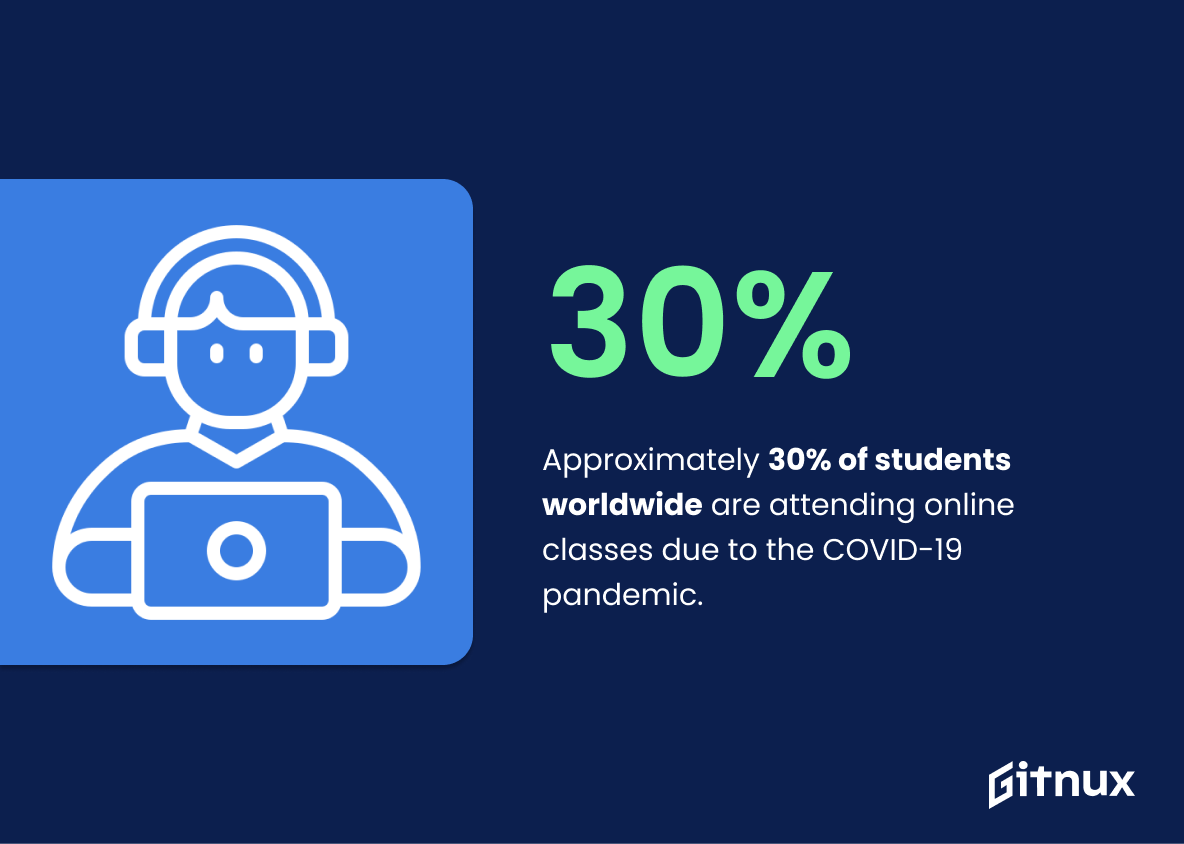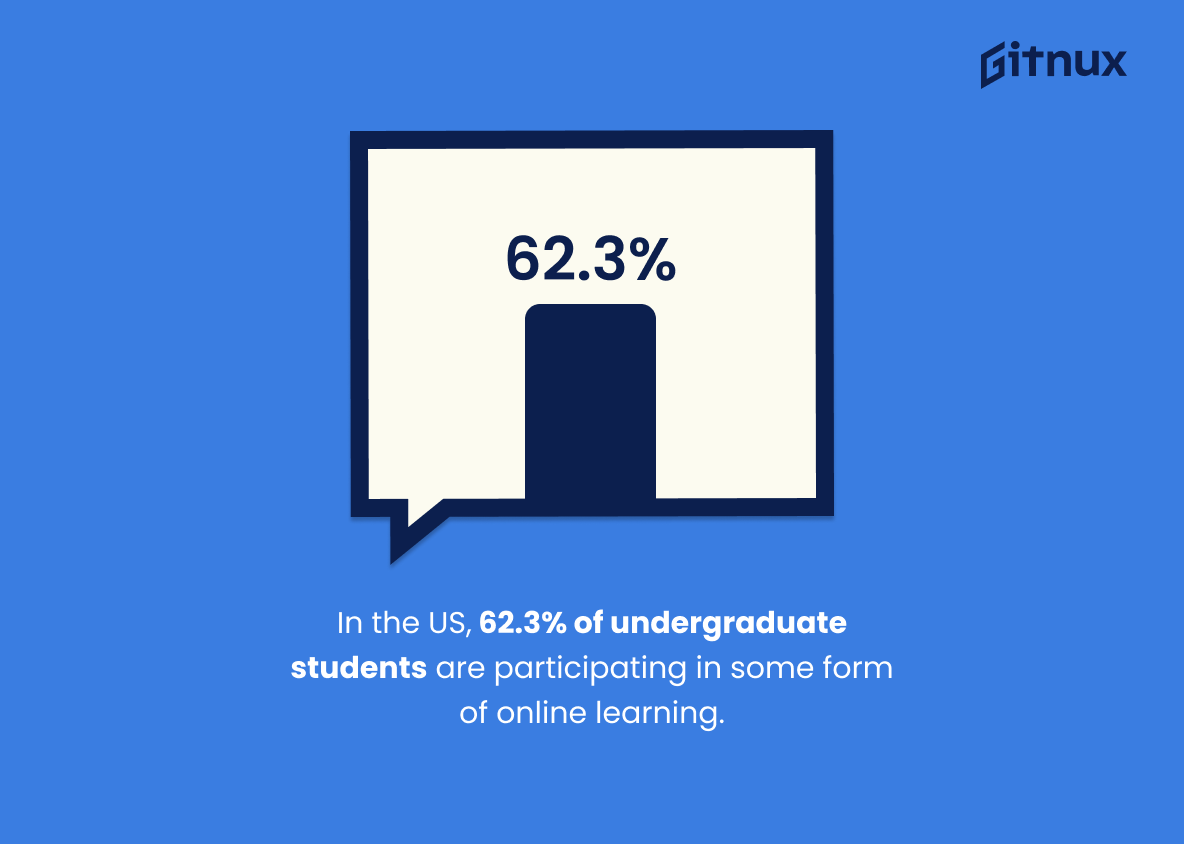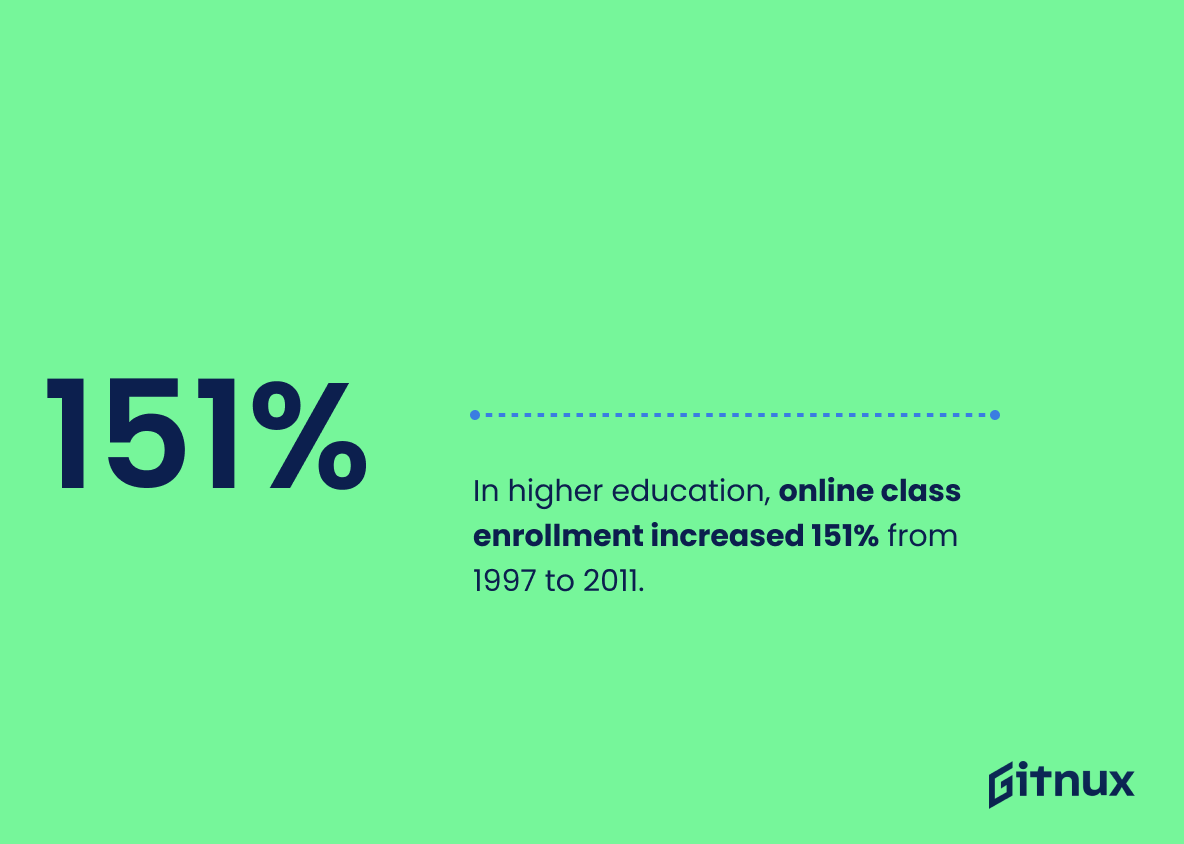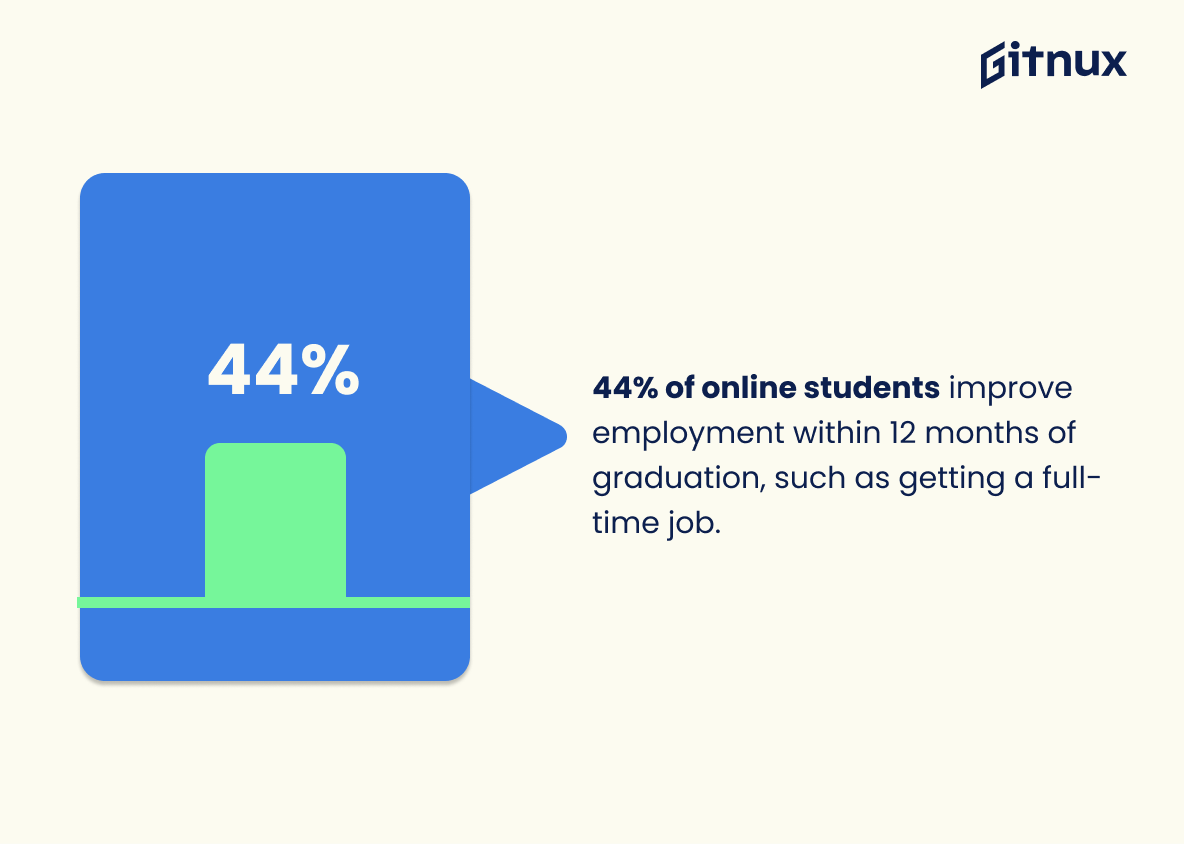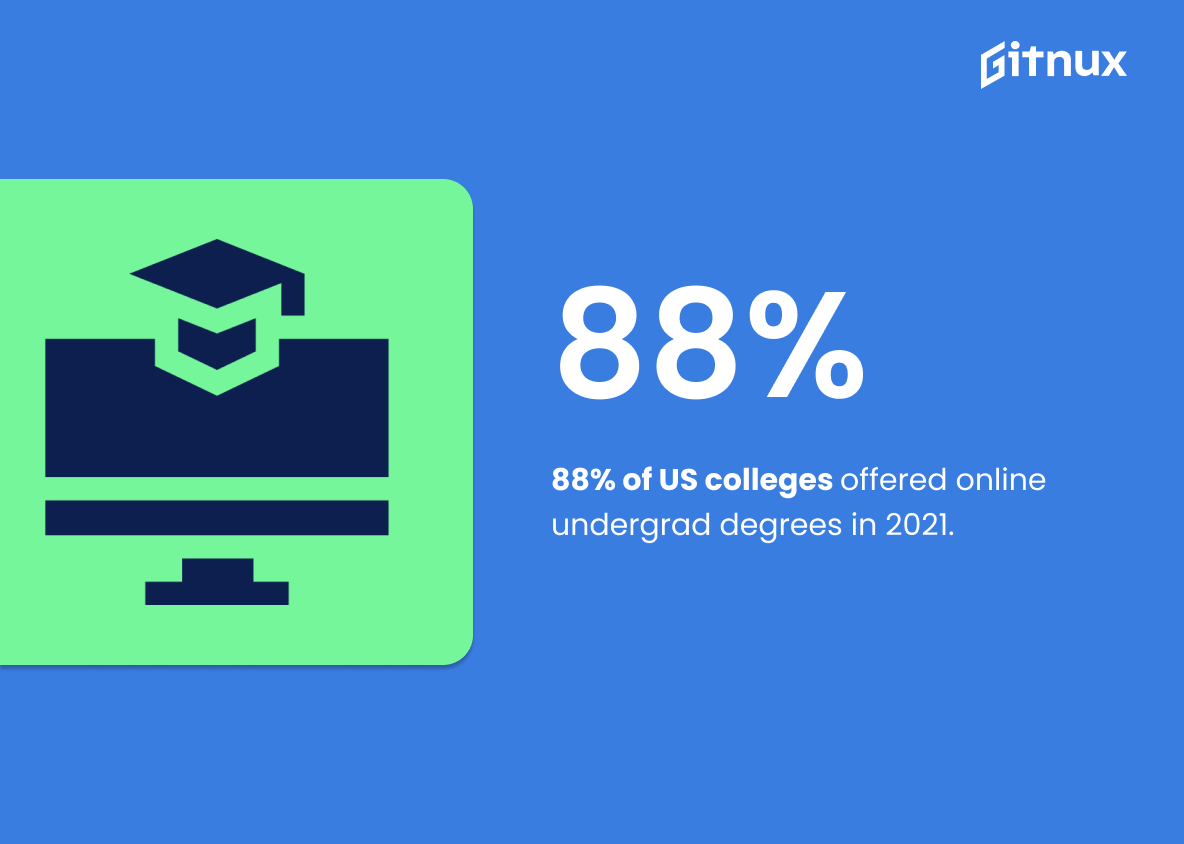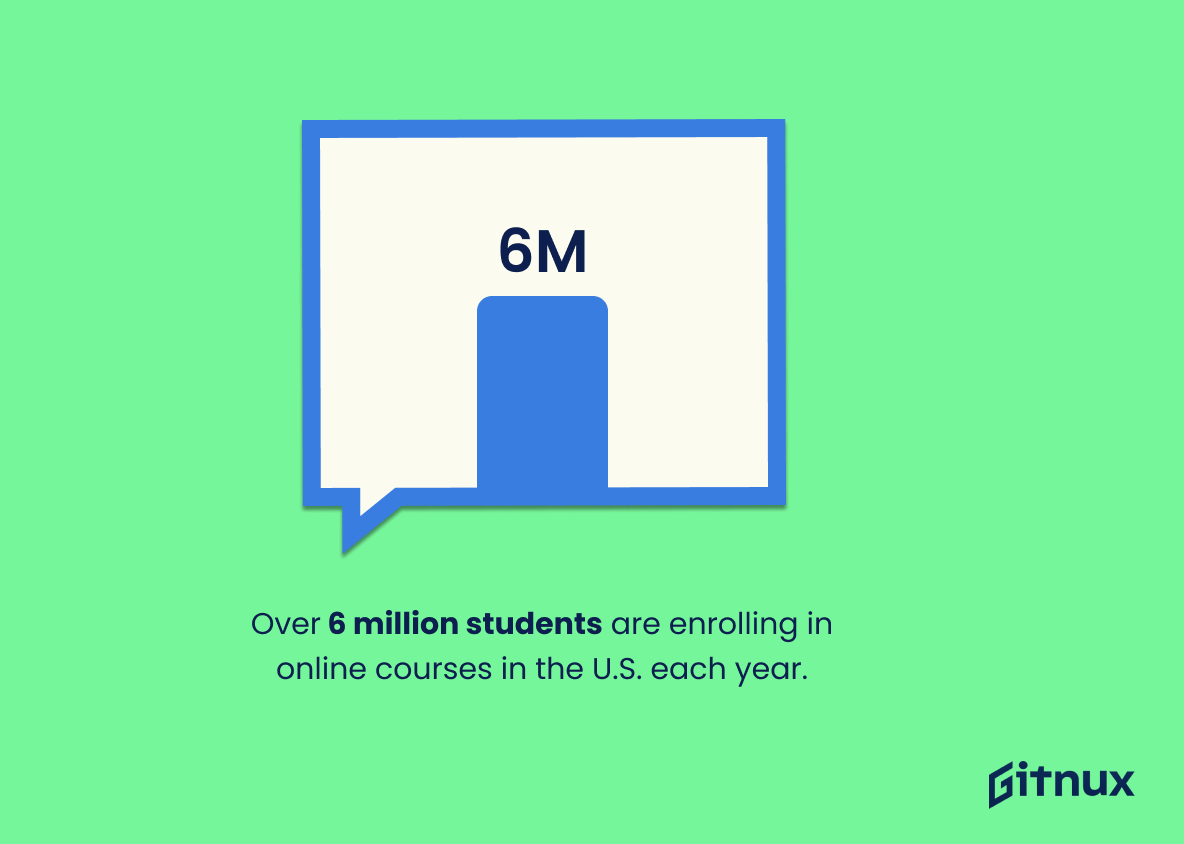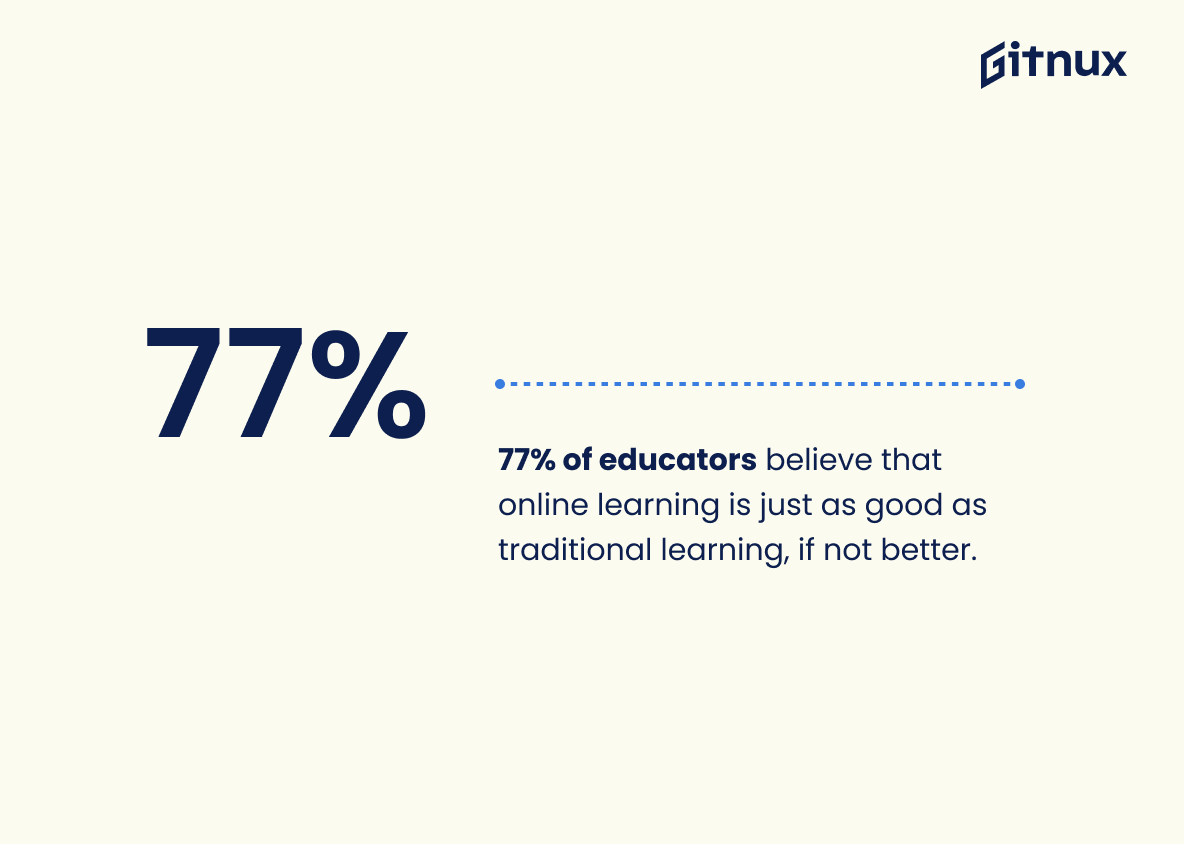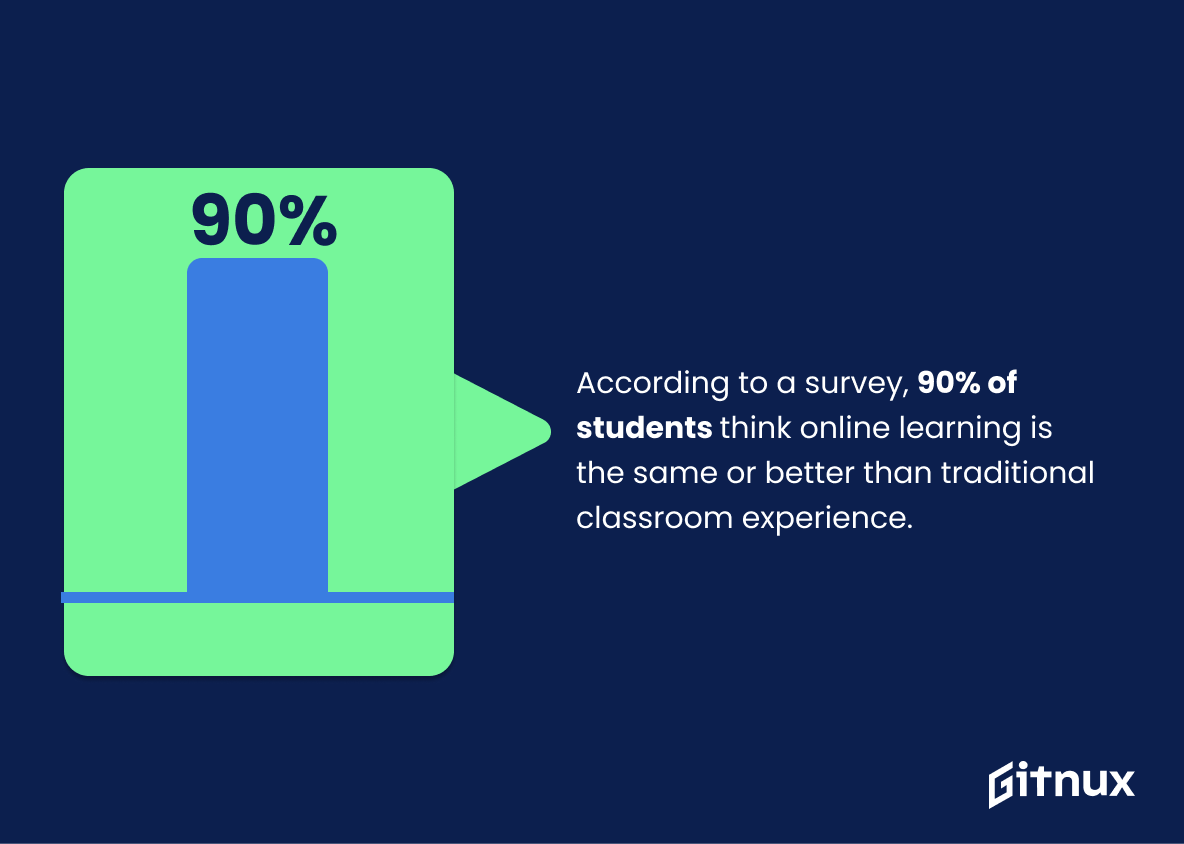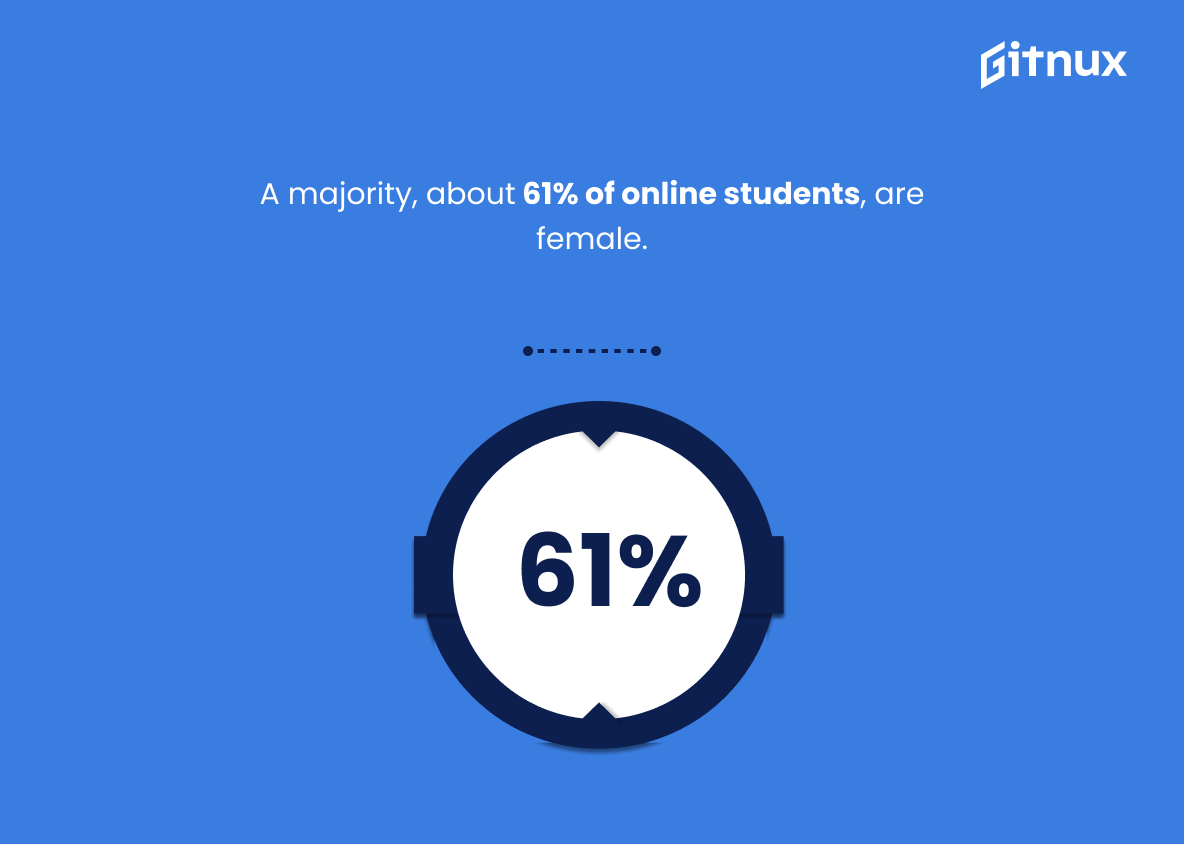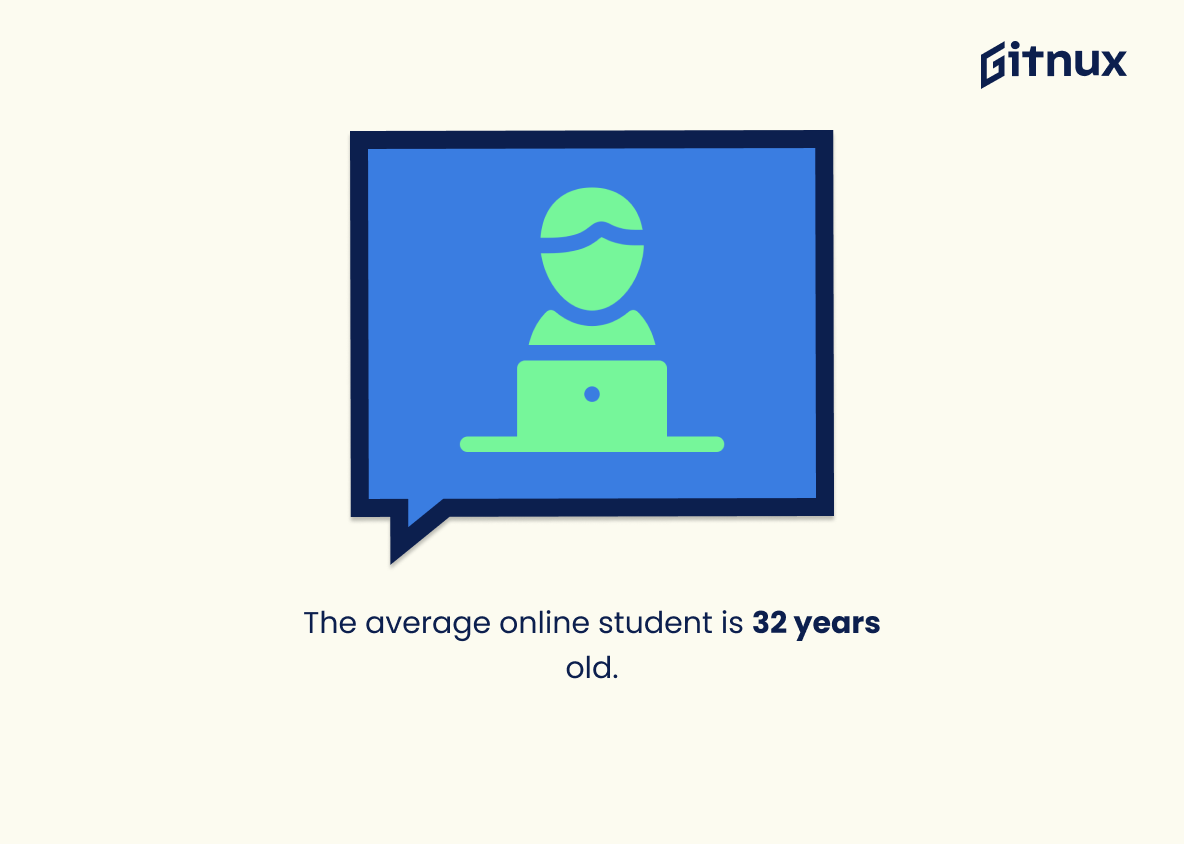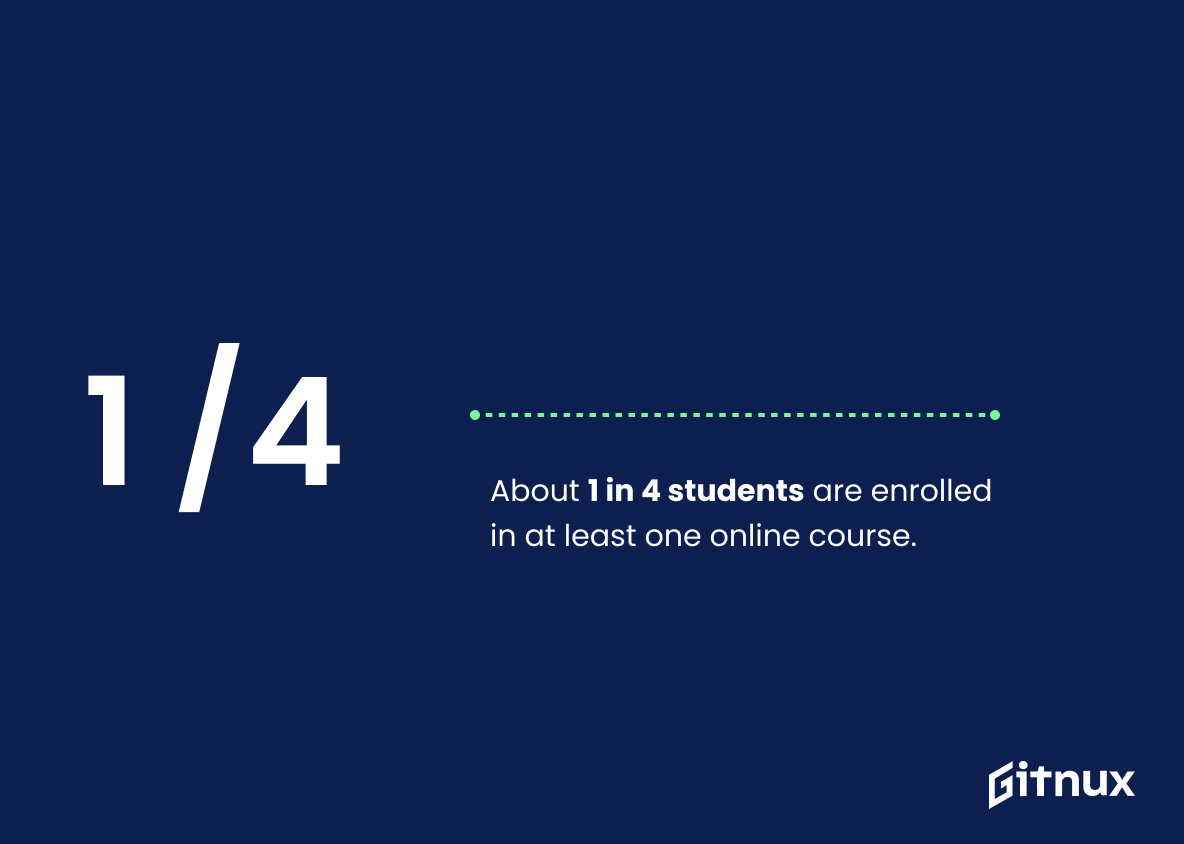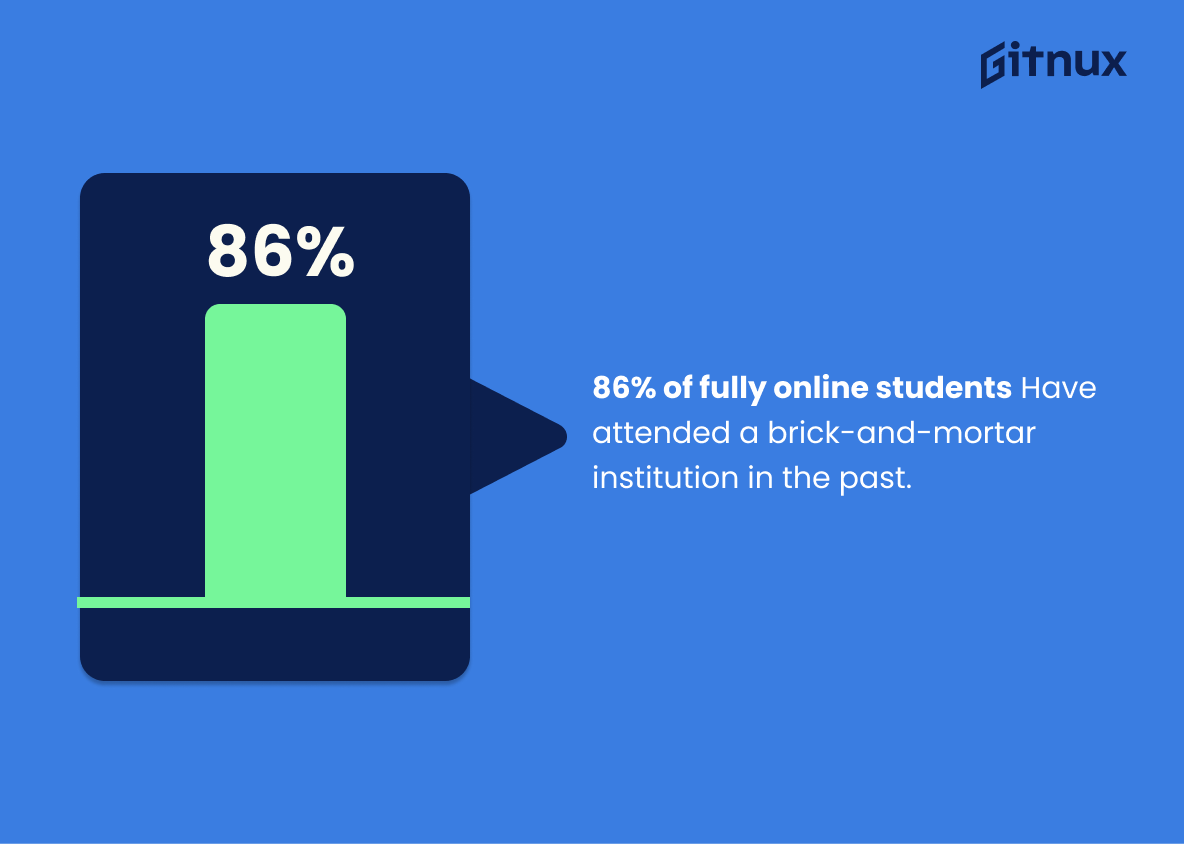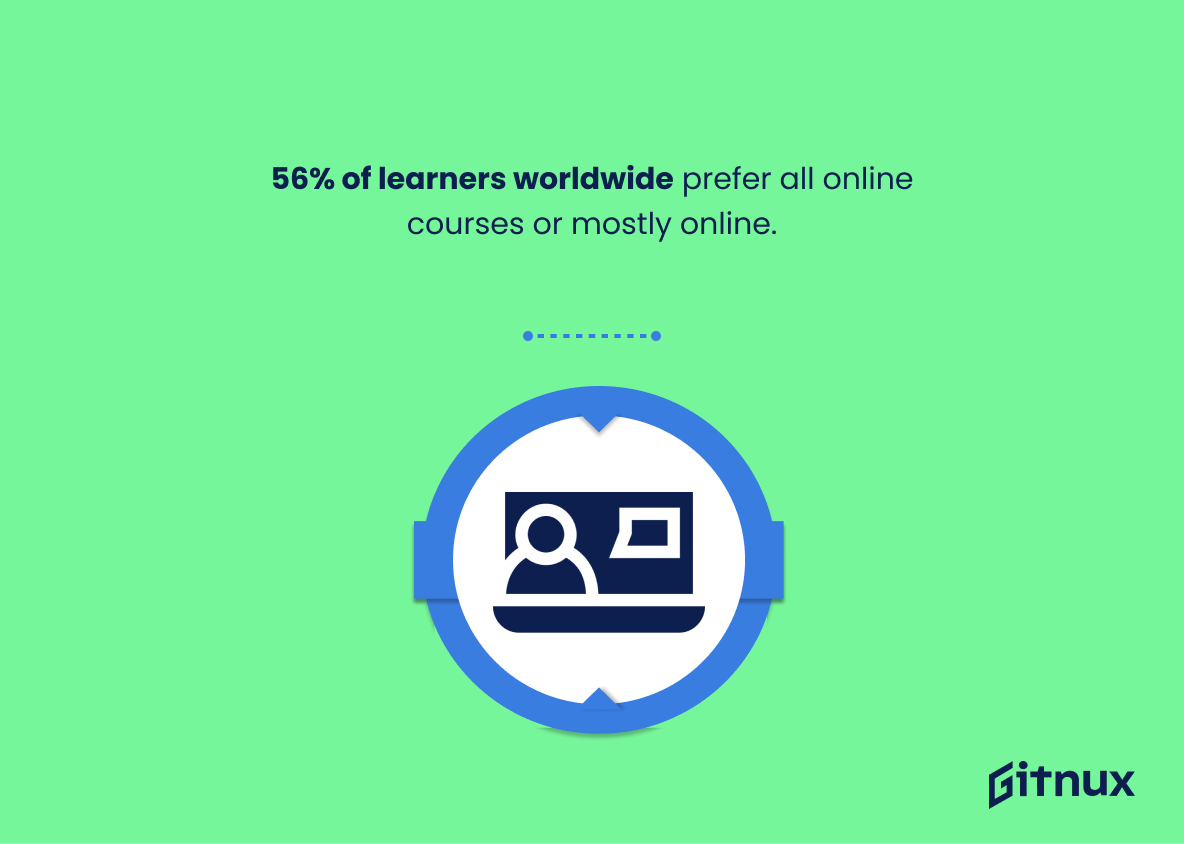In the swiftly evolving digital landscape, online education has cemented its place as a vital pillar in the realm of learning and development. Today, we’re delving into the fascinating world of online classes, armed with powerful numbers and revealing statistics. This post is designed to chronicle the prominent role of online classes, tracking their meteoric rise, and outlining their growing importance in today’s educational ecosystem. As we navigate through this analytical journey, we will uncover intriguing data points that exemplify the dramatic shift in the learning behaviors of modern society, painting a comprehensive picture of the state of online classes today. So, whether you’re an educator aiming to leverage virtual learning, a learner seeking flexible education options, or a curious observer, these online classes statistics will offer invaluable insights.
The Latest Online Classes Statistics Unveiled
Approximately 30% of students worldwide are attending online classes due to the COVID-19 pandemic.
Delving into the realm of online education, we uncover a fascinating trend, with nearly 30% of students globally engaged in virtual learning, propelled by the COVID-19 pandemic. This figure serves as a powerful testament to the growing importance and acceptance of e-learning within our education system. It indicates an educational revolution, where the digital classrooms are dismantling geographical boundaries, paving the way for greater inclusivity.
This percentage also reflects the rapid pandemic-induced shift in our education paradigm, shifting from traditional in-person teaching to a more flexible, accessible online format. It underscores a significant transformation, something blog readers might find insightful as they navigate the landscape of online education.
Moreover, observing such a substantial segment of students adapting to online classes can evoke a sense of camaraderie among readers—emphasizing that we’re all part of this dramatic change. Therefore, the statistic turns into a binding thread, reminding students worldwide that they are not isolated in this experience, thus highlighting its relevance in a blog post about online classes statistics.
In the US, 62.3% of undergraduate students are participating in some form of online learning.
Unmasking a trend in higher education, the intriguing little datum reveals that an impressive proportion, namely 62.3%, of US undergraduate students have taken the digital plunge into the realm of online learning. The prevalence of online education has voraciously spread across the student body, becoming more than just a phenomenon. This data serves as a touchstone in our understanding of how education landscapes are being reshaped and how learning modalities are rapidly transitioning. Harnessing the essence of this statistic, one can further drill down the implications of this shift for educators, students, and policy-makers alike, while also stressing the importance of digital literacy in our increasingly interconnected world. The statistic thus stands as a testament to the steady rise of online education and a testament to its acceptance among US undergraduate students.
In higher education, online class enrollment increased 151% from 1997 to 2011.
A dramatic surge of 151% in online class enrollment in higher education from 1997 to 2011 paints a vivid picture of the evolving landscapes of education and learning. This seismic shift undoubtedly stokes the interest of educators, students, and policymakers alike. Highlighting such evidence in a blog post on Online Classes Statistics is like casting a spotlight over the undeniable ascendance of digital learning. It serves as a testament to the breakthroughs of the information age, the changing preferences of learners, and their increasing gravitation towards more flexible, accessible, and customization-capable educational environments. Ultimately, these evidences not only encapsulate past trends but can also guide forecasts for the future of education.
About 44% of online students report improvements in their employment standing, such as getting a full-time job within 12 months after graduation.
Shedding light on the value of online education, the statistic revealing that approximately 44% of online students witness advancements in their career status after graduation adds a compelling angle. This data divulges a positive correlation between online learning and substantial career progression, including transitions into full-time roles within a year post-graduation. In the realm of online classes statistics, this figure underpins the escalating influence of digital learning platforms on job prospects, thereby strengthening the argument for online education. It positions online learning not merely as a convenient alternative to traditional education, but also a potential catalyst for career advancement, further invigorating the discourse on the practicality and benefits of online classes.
As of 2021, 81% of the world’s K-12 students used digital learning platforms.
This intriguing statistic breathes life into the discourse on the growing ubiquity of online classes for K-12 students. It paints a vivid picture of the digital education landscape in 2021, illustrating a world where the majority of young learners are navigating classes virtually. In the grand canvas of online classes statistics, this becomes a significant marker, a testament to how widespread digital learning platforms have become. It provides context, adds depth to our understanding, and serves as a point of reference that quantifies the scale of the shift from traditional classrooms to the digital realm.
In 2021, nearly 88% of American higher education institutions offered online undergraduate degree programs.
Highlighting the considerable surge to 88% of American higher education institutions offering online undergraduate degree programs in 2021 not only paints a vivid picture of the shifting educational landscape, but it also underscores the growing acknowledgment of online education’s importance. It’s like a rising tide that lifts all boats, implying that the tide of e-learning is swelling, encouraging learners to navigate the digital seas. This noteworthy percent change signals a massive leap in the flexibility of pursuing higher education, bolstering the theme of the blog post which focuses on online classes statistics. In essence, it adds a dynamic stroke to our canvas of understanding, illustrating the modern trend in education strongly pivoting towards digitization.
Over 6 million students are enrolling in online courses in the U.S. each year.
This statistic shines a spotlight on a pivotal transformation in the realm of education: the booming popularity of online classes. Recording a whopping 6 million student enrollments annually in the U.S. alone, this number speaks volumes about the growing acceptance and reliance on digital learning. The numerical validation works as a compelling prologue, leading readers through the virtual portal of education, into a world tethered to technology and flexibility. It serves as a grand teaser of the changing education trends and the rising dominance of online learning, thereby reinforcing the relevance of the blog post on Online Classes Statistics and stimulating further interest in the topic.
77% of educators believe that online learning is just as good as traditional learning, if not better.
As we delve into the realm of online classes, the statistic that 77% of educators perceive online learning as equally effective as, if not surpassing traditional learning, becomes crucial. It paints a compelling picture on the canvas of digital education, heralding a shift in acceptance and effectiveness. This statistic, in essence, is the beating heart of our blog post about Online Classes Statistics, corroborating the rise of virtual classrooms. It not only highlights educators’ positive inclinations towards this mode of education but also hints at the potential rise in its adoption, consequently shaping the landscape of global education. Embodied within this percentage is the message of reassurance for those who may be hesitant towards transitioning to online education, by signifying condoned credibility from those who are the pillars of the educational system — the educators. Therefore, this statistic can dramatically impact one’s perspective on online learning, punctuating the narrative of our post with a vibrant touch of validity.
According to a survey, 90% of students think online learning is the same or better than traditional classroom experience.
Highlighting the statistic that 90% of students perceive online learning as equivalent to or surpassing traditional classroom experience helps to illustrate the contemporary thrust towards digital education. In a blog post about Online Classes Statistics, this fact emerges as a robust testament to the growing acceptance and potential of online learning. It brings to light that the virtual education realm is not merely a second-choice option, but a preferred method for a significant percentage of learners. Beyond that, it underscores that today’s generation of students, digital natives themselves, are embracing eLearning, signaling a significant shift in educational paradigms. Furthermore, it provides data-backed validation that could motivate educational institutions and policymakers to invest more heavily in online teaching platforms and resources.
A majority, about 61% of online students, are female.
In delving into the world of online education, one might stumble upon an intriguing twist in the tale; approximately 61% of online students are female. This staggering figure flips the script on traditional gender dynamics in education, revealing a possible trend worth unravelling. It suggests a tipping point where the digital environment becomes a platform empowering greater female student participation. As we dive deeper into the realm of e-learning, this slice of data provides a key stepping stone, giving thinkers, educators, and policymakers cause to ponder over the factors drawing such an influx of women to online classes, and how these insights can be used to further balance or even tip traditional scales in education and beyond.
The online learning industry is projected to surpass $370 billion by 2026
Drawing attention to the startling forecast of the online learning industry surpassing $370 billion by 2026, helps in illustrating the undeniable growth and potential of this educational medium. More than just numbers, this prediction multi-facetedly offers insights into the evolving educational landscape.
The massive monetary value attached to online classes, for one, punctuates their expanded acceptance and universal adoption in not just academia, but also in corporate and self-learning avenues. Additionally, it also hints at the innovation and investment opportunities within the sector, appealing to educational and technological entrepreneurs.
This transformative projection further brings into focus the digital shift in learning methods and underscores how vital it is for educational institutions and individuals to adapt to the era of e-learning. Therefore, these forecasted billions aren’t just about the prosperity of a sector, but they signify the future direction and the mounting importance of online learning in our society.
The average online student is 32 years old.
Highlighting the average age of online students as 32 years provides critical insight as we unravel the demographics of the e-learning landscape. It shatters the stereotypical image that online learning is predominantly the realm of younger, perhaps tech-savvier individuals. In contrast, it adds weight to the premise that a notable proportion of online learners are, in fact, mid-career professionals looking to upskill or embark on a new career path. Essentially, it underlines the flexibility and accessibility of online education which caters to the needs of a broader age range, encapsulating an audience beyond traditional university-aged students.
About 1 in 4 students are enrolled in at least one online course.
Within the realm of online learning, the proportion of student engagement is a key player, demonstrated by the fact that around 25% of students are participating in at least one digital class. This figure vividly illustrates the significant shift in educational practices towards online platforms, indicating that traditional campus-based learning is no longer the only choice for today’s students. The rising trend towards digital coursework encapsulates the modern era’s adaptability to technological advancements, fostering greater flexibility and accessibility for learners. Diving into the statistic opens up a conversation about the changes in the academic landscape and how universities, colleges, and students are evolving in response.
86% of fully online students Have attended a brick-and-mortar institution in the past.
The statistic stating that 86% of fully online students have previously attended a brick-and-mortar institution offers us a compelling insight for a blog post about online classes. It reveals an intriguing evolution in educational pathways, suggesting a growing trend of learners transitioning from traditional classrooms to virtual learning spaces.
This unexpected bridge between traditional and online education, underlined by the statistic, puts a spotlight on the appeal of online education’s flexibility, accessibility, and self-paced learning that pulls learners away from structured, location-bound education models.
Moreover, this statistic may indirectly indicate that people find online education as a viable, equivalent, or even a preferable alternative to brick-and-mortar institutions. It also informs stakeholders – namely educators, institutions, policy makers, and students, about the need to support and improve online learning infrastructure considering this significant user base.
56% of learners worldwide prefer all online courses or mostly online.
Reflecting upon the captivating reveal that 56% of worldwide learners favor all or mainly online courses, we delve into an astounding shifting panorama in global education. Imagine, more than half of the world’s learners are seeking knowledge from the comfort of their homes or cafes, accessing brilliant minds globally without geographical boundaries.
Within the contours of a blog post about Online Classes Statistics, this piece of data forms the heart of the discourse. It eloquently underscores the gravitation towards digital learning, the cybernetic classrooms of the future. It not only depicts a significant drift from traditional learning models but also hints at the need for educators and institutions to adapt to the changing preferences.
What’s more, these numbers serve as a beacon of what lies ahead, a testament to the acceptance and growing reliance on interconnected systems in our lives. After all, these digits aren’t just percentage points, they’re echoes of a larger conversation, a vibrant narrative on how we learn in the digital age. They shape our understanding of this evolving phenomenon, adding depth and perspective to the discussion, thereby enriching the discursive fabric of our blog post about Online Classes Statistics.
In 2019, only 3% of India’s college students were enrolled in online classes.
Unveiling a striking revelation from 2019, a mere 3% of India’s college students were engaged with online classes. Painted into the broader canvas of a discussion about Online Classes Statistics, this figure does not fall into the backdrop. Instead, it forms a pivotal point of interest as it clearly spells out the infancy stage of online education in one of the world’s most populous countries. Just imagine, 97% of India’s vast pool of college students were yet to tap into the potential of online learning. This number provides a concrete starting point, a reference that enables an intriguing evaluation of growth patterns and the uncharted expanses that online education is yet to weave in India’s academic fabric. The depth and the dimension of the journey it has taken since then, and where it can trail blaze into the future are captivating subjects for our exploration.
In 2018, only 15% of US college students were enrolled in online-exclusive degree programs.
Shedding light on the intriguing factoid from 2018, wherein a mere 15% of US college students chose the path of online-exclusive degree programs, triggers a stimulating thought process. For a landscape that teems with technological advancements, this number seems to be a stark reminder of a preference for traditional educational methods. This data paints a vivid backdrop for a thorough discourse in a blog post centered around Online Classes Statistics. The disparity between this minimal percentage and the potential virtual learning holds endeavors readers to journey deeper into the factors influencing such educational choices – be it the allure and benefits of face-to-face learning or the uncertainties and barriers associated with online education. Certainly, this percentage was a ‘stepping stone’ towards better understanding the evolution, challenges, and triumphs of online education.
In 2020, there were a reported 2.96 billion people using mobile learning around the world.
Drawing from the riveting revelation of 2.96 billion people worldwide embracing mobile learning in 2020, a blog post about online classes statistics would drastically gain from this piece of data. It vividly paints a picture of the enormous role mobile learning is playing in the global education landscape, thereby underscoring the burgeoning importance of digital solutions in teaching and learning.
It serves as a potent testament to the escalating trend of online education, urging educators and learners to harness this immense potential. This transcendence into digital platforms for learning goes to show the convenience and accessibility factor that this form of education provides to users globally.
Moreover, it propels the discourse on necessary infrastructure and policy changes that need to be in place not only for online learning in general but with a renewed focus on mobile learning as well. Hence, this astounding figure of 2.96 billion users can catalyze key conversations and decisions in the sphere of online education.
Conclusion
As we delve deeper into the digital age, it’s clear that online classes are rapidly becoming a significant contender in the sphere of education. The enhanced accessibility, convenience, and flexibility they offer make them an increasingly popular choice among students and professionals alike. Statistics further reaffirm this growth trend in the global educational landscape. However, evidence also points towards the necessity of optimizing these digital platforms for improved student engagement and learning outcomes. Online classes are indeed shaping the future of education; hence, educators, institution leaders, and policymakers must leverage these findings to tailor their strategies and ensure they’re equipped to navigate the changing tides of the educational realm effectively.
References
0. – https://www.edtechmagazine.com
1. – https://www.www.globenewswire.com
2. – https://www.www.weforum.org
3. – https://www.www.nber.org
4. – https://www.www.indiatoday.in
5. – https://www.www.businesswire.com
6. – https://www.onlinelearningconsortium.org
7. – https://www.nces.ed.gov
8. – https://www.www.sr.ithaka.org
9. – https://www.www.semrush.com
10. – https://www.www.edweek.org
11. – https://www.www.usnews.com
12. – https://www.www.insidehighered.com
13. – https://www.elearnmagazine.com
14. – https://www.evolllution.com
15. – https://www.www.learninghouse.com
